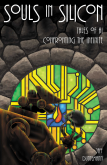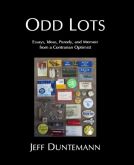Just the other day, Good Pope Bennie opened a door for conservative Anglicans to become Roman Catholics without completely abandoning their Anglican traditions. (Links to more discussion here.) The Roman Catholic Church will be willing to create Personal Ordinariates for converting Anglicans, which is jargon for establishing non-territorial dioceses in which members retain a distinctive liturgical style different from that of the RCC as a whole. This has been done before on a very small scale, though it’s a complex business and not everybody within the RCC agrees that it’s a good thing.
Basically, conservative Anglicans will be received into custom-built dioceses with their own priests and prayerbooks (what Anglicans call missals) and report directly to the Pope, rather than to an RC archbishop in a particular city. They’ll be able to continue using their liturgies and occasional ceremonies pretty much as they have before. The big win for them is that they will no longer have to cope with women priests or demands for gay marriage. However, there’s a downside, and I wonder if it’s dawned on potential crossover Anglicans what they’ll have to leave behind:
- Birth control. Even conservative Anglicans in my experience have no particular issue with contraception. (Abortion is another matter entirely.) In the Roman Catholic Church, procreation is the primary reason for marriage and the only permissible reason for sexual activity or even sexual thoughts. Contraception remains a mortal sin. There’s no indication that Personal Ordinariates trump Papal teachings at this level.
- Divorce. This was, after all, the whole reason for Anglicanism to begin with. While divorce is treated less casually among conservative Anglicans than among liberal Anglicans and Episcopalians, it is nonetheless embraced reluctantly when necessary. Crossover Anglicans will have to agree with Rome that divorce is impossible.
- Their bishops. Male Anglican/Episcopalian priests have been accepted into the RCC in the past, but married bishops are considered off the table. The problem here is that every prominent Anglican bishop I’ve ever heard of has been married, primarily because nearly all Anglican/Episcopalian priests are married. So crossover Anglicans will have to accept episcopal oversight from Roman Catholic appointee bishops, or bishops newly consecrated out of the ranks of (the very uncommon) unmarried priests.
I don’t think this will work, and here’s why: In my view, a religious culture is more than a set of prayers and ceremonies. It’s a way of seeing Earth as well as a way of seeing Heaven, and in my own research the Roman Catholic and Anglican Catholic undertstandings of the physical world, the human person, sex, and marriage stand out as radically different. There’s some serious question in my mind as to how many Anglicans will embrace Rome once they completely understand what Rome will demand of them–and whether those who accede will continue to be Anglicans in any honest sense of the word.
 Forty years ago, we watched three human beings travel to the Moon. Well, they got there, and took a spin or two around it, and then came home. They didn’t land, but that’s ok. (Gravity wells are a bitch.) We didn’t appreciate at the time what a feat it was, and would not in fact understand the bittersweet truth for many years thereafter: We had a window; it opened, and it closed. It may not open again—but while it was open, we took it.
Forty years ago, we watched three human beings travel to the Moon. Well, they got there, and took a spin or two around it, and then came home. They didn’t land, but that’s ok. (Gravity wells are a bitch.) We didn’t appreciate at the time what a feat it was, and would not in fact understand the bittersweet truth for many years thereafter: We had a window; it opened, and it closed. It may not open again—but while it was open, we took it.









